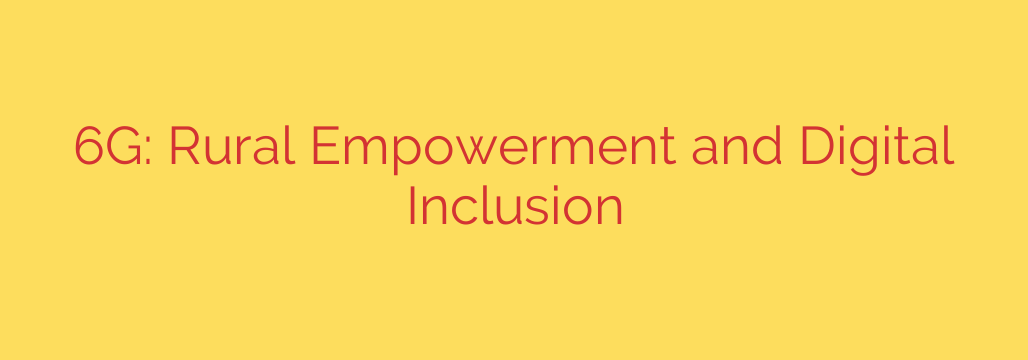
The arrival of next-generation wireless technology holds immense promise, especially for areas traditionally left behind in the digital revolution. While 5G is still being rolled out, the focus is already shifting to 6G, the anticipated successor, and its potential to finally bridge the persistent digital divide. This future technology isn’t just about faster speeds in cities; it’s a critical opportunity for rural empowerment and true digital inclusion globally.
Today, a significant gap remains in broadband access and quality between urban and rural regions. This disparity affects everything from economic opportunities and educational attainment to healthcare access and social participation. High-speed internet is no longer a luxury; it is a fundamental necessity for modern life and economic growth. Without it, rural communities face significant disadvantages.
6G technology is envisioned to surpass 5G in nearly every metric. It promises vastly higher data rates, near-zero latency, and massive connectivity, enabling entirely new applications. More importantly for rural areas, 6G aims for ubiquitous coverage, potentially reaching areas that are currently underserved or completely unconnected. This could be achieved through a combination of terrestrial networks, satellite integration, and innovative deployment strategies tailored for less dense populations.
The impact of widespread, reliable, and affordable connectivity in rural areas would be transformative. In agriculture, smart farming techniques using sensors, AI, and automation could become commonplace, increasing efficiency and sustainability. For healthcare, telemedicine could provide specialists access to remote patients, reducing travel burdens and improving outcomes. Education could become more equitable, with students gaining access to online resources and remote learning opportunities previously unavailable. Small businesses could tap into global markets, fostering local economic development.
Furthermore, enhanced connectivity supports community resilience. During emergencies, reliable communication is vital. For civic engagement, it allows residents to participate more actively in local governance and access essential services online. Digital skills development, often hampered by lack of access, can flourish when the infrastructure is in place, creating a more digitally literate and empowered populace.
However, realizing the potential of 6G for rural inclusion is not without its challenges. The sheer cost of building new infrastructure, particularly in geographically challenging or sparsely populated regions, is substantial. Ensuring the technology is affordable and accessible to all residents, regardless of income, is crucial. There are also complexities related to spectrum allocation, regulatory frameworks, and the need for digital literacy programs to ensure people can effectively use the new connectivity.
Policy and investment will play a critical role. Governments and industry leaders must prioritize equitable deployment, moving beyond purely market-driven strategies that often neglect rural areas. Incentives for building infrastructure, support for community-led initiatives, and policies that promote digital equity are essential to ensure 6G genuinely serves everyone.
Ultimately, the success of 6G should be measured not just by its technical capabilities, but by its ability to create a more connected, equitable, and prosperous society. By focusing on rural empowerment and digital inclusion from the outset, 6G has the potential to be a powerful force for positive change, bringing the benefits of the digital future to communities that need it most.
Source: https://www.datacenterdynamics.com/en/opinions/6g-bridging-the-digital-divide-and-empowering-rural-communities/







